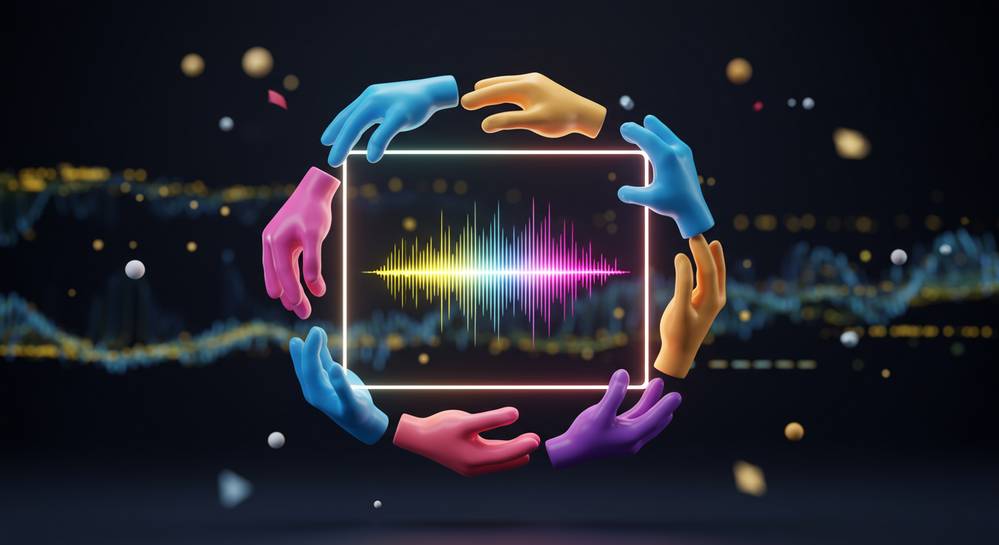AI voice cloning has unlocked incredible creative and practical possibilities, but it also opens the door to significant ethical risks. As this technology becomes more accessible, understanding the framework for its responsible use is no longer optional—it is essential. This guide provides a comprehensive overview of the core ai voice cloning ethical guidelines needed to navigate this powerful new frontier safely and effectively.
Contents
The dual-use dilemma of AI voice cloning
The rapid advancement of artificial intelligence has introduced powerful tools once confined to science fiction. Voice cloning stands at the forefront, offering immense benefits like restoring speech for those unable to talk or creating realistic digital assistants. However, this same technology presents a profound ethical challenge due to its potential for misuse, creating a complex dual-use dilemma that demands immediate attention.
The potential for misuse creates serious deepfake audio threats. Malicious actors can impersonate public figures to spread disinformation or mimic loved ones for financial fraud. These scenarios are not hypothetical; they represent clear and present dangers. Without established ai voice cloning ethical guidelines, the technology could erode public trust and personal security. This ethical tightrope walk demands a clear framework for responsible AI development, ensuring innovation does not come at the cost of safety.
Core principles for ethical voice synthesis

To ensure voice cloning technology develops in a way that is beneficial and safe, a core set of principles is necessary. These ai voice cloning ethical guidelines serve as the foundation for responsible innovation, balancing technical capability with human-centric values. Adopting these standards is fundamental to building a trustworthy ecosystem around synthetic audio and mitigating risks before they escalate.
- Consent and Transparency: This is the most critical principle. Voice cloning must only occur with the explicit, informed consent of the person whose voice is replicated. Furthermore, any content generated using a synthetic voice should be clearly disclosed as such to the audience.
- Accountability and Responsibility: Developers and platforms distributing these tools are responsible for implementing safeguards. This includes systems to detect malicious use and being accountable for their technology’s impact on society.
- Data Privacy and Security: The voice data used to train AI models is personal and sensitive. It must be collected and stored with the highest security standards, addressing the key privacy concerns in AI development to prevent unauthorized access.
- Beneficence and Non-maleficence: This principle dictates that the technology should be used to do good and avoid causing harm. Applications should provide value rather than being deployed for fraud or harassment.
The roles of stakeholders in upholding standards

Upholding ethical standards in AI voice cloning is not one group’s sole responsibility. It requires a collaborative effort from all parties involved in the technology’s lifecycle. Each stakeholder has a unique role in creating a safe ecosystem. By fulfilling these roles, we can collectively mitigate risks and guide the technology toward positive outcomes.
For technology developers
Developers are the architects of voice cloning systems. They must build ethics into the technology from the ground up. This involves integrating robust identity verification to ensure users have explicit consent. They should also embed technical safeguards, like digital watermarking, into generated audio to make it traceable and identifiable as synthetic.
For content creators and users
Individuals using voice cloning tools must commit to ethical application. This means securing clear consent from the voice owner and transparently labeling AI-generated audio. Refusing to use the technology for malicious purposes like spreading disinformation is paramount to building public trust and ensuring it remains a tool for creativity.
For platforms and regulators
Social media platforms and government bodies play a crucial governance role. Platforms must develop and enforce clear policies that prohibit harmful deepfake audio. Regulators must create legal frameworks that criminalize malicious impersonation. This helps define who is responsible for the actions of AI systems and creates a safe environment for innovation.
Future challenges and the path to regulation

As AI voice cloning technology becomes more sophisticated, the ethical and regulatory landscape must evolve. The challenges ahead are complex, involving a continuous race between synthetic media generation and detection tools. As models become more powerful, their outputs will be virtually indistinguishable from real human speech. This makes transparent disclosure and technical safeguards like digital watermarking more critical than ever for maintaining trust.
A multi-pronged approach to governance
The path forward requires a multi-pronged approach based on clear ai voice cloning ethical guidelines. International cooperation is necessary to establish global norms and prevent bad actors from exploiting jurisdictions with lax regulations. Additionally, public education is vital to foster digital literacy, helping people recognize potential deception. The goal is not to stifle innovation but to create a robust framework of laws and industry standards that ensures this technology serves humanity responsibly.
Navigating the complexities of AI voice cloning requires a shared commitment to ethical principles. By prioritizing consent, transparency, and accountability, we can unlock the technology’s incredible potential while safeguarding against its risks. This journey depends on collaboration between developers, users, and regulators. For more insights into emerging technologies and their societal impact, explore the resources at Virtual Tech Vision.









